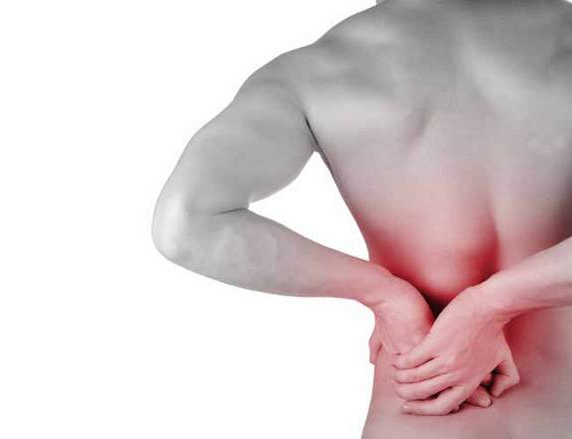why not barefoot? Its actually quite important for us to go barefoot for a period of time each and every day. Any muscles in the body need training and the muscles in the feet need exercise just as much as any major muscle group. It is not enough to say that you are on your feet all day. Standing only does a tiny part of the job. Our feet are flexible, fantastic, feline like tendrils that have an incredible range of motion and articulation that is almost as dextrous as the hand. And if we don’t use those muscles, then they lose their tone and ability to work.
The latest craze in athletic weekend warriors kit bag is the rather modularly designed pummellliing machine, the MASSAGE GUN. Open any facebook account and you will come across commercials with rippling, muscular bodies being ‘flubberpumped’ by these percussive prodders, vibrating flesh and muscles to jellylike consistency that the late Margaret Fulton would be proud of. “increased range of motion, decreased pain and increased recovery time” are the claims and prophecies of these promotional campaigns featuring these new and wonderful devices
The big toe is vital to us being able to control the whole motion of the foot itself as we take a step and move our weight forward over the foot, ankle, knee and all the way to the pelvis. Thus it stands that any deviation or issue with this joint and structure has massive impacts on the rest of our body and our ability to generate locomotion.
It’s not easy when you are facing 12 weeks of recovery before you can move freely again to focus on the positive. But thats precisely why its harder - because you have to do the work. In preparing for this, there are some stages of recovery that you should understand that go hand in hand with the physical therapy that you are about to endure.
Abdominal cramping is something that many of us have dealt with. You’ve had a big, rich, heavy meal, you’ve been not taking care of your intake over a period of indulgent celebration or you’ve been doing some self administration of pain medications and haven’t been aware of your diet. Cramping and bloating seems such a generic complaint that often we may dismiss simple things as indigestion, or a meal that ‘may not have been right’ from the dodgy street vendor at a music festival. But when is abdominal cramping something more that we should be worried about? There may be many different causes of concern for abdominal and intestinal pain but we shouldn’t dismiss or disregard what our ‘guts may be telling us’.
bicep curls - the exercise one should never do. Standing in a CrossFit gym and doing a bicep curl is usually the best way to lose instant credibility and imbibe questioning and dismissive, wry glances. However this opinion may be displaced as I discovered. The Curl actually has a function. Sure it is an isolation exercise and trains a single muscle. However as I discovered, it can also be utilised when you are working with a complex movement or trying to achieve some supporting strength for the shoulders.
So often in the clinic when faced with someone’s fear of the dreaded question - ‘How much exercise do you do’, I receive a confident and bold reply of “Oh I exercise 30min a day at least. I get my exercise on my walk to work.” I’ll be brutally honest here. Its an encouragement that someone is moving 30mins a day and being proactive in their approach to remaining mobile and remaining fit enough to engage in a 30min walk to work. However, too often in an approach to true exercise or ‘moveability’ of our body that keeps ALL our joint open, working and in reasonable shape - a walk is just not enough.
The predominant action associated with the arm muscles are elbow flexion along with supination and pronation of the forearm. In regards to elbow flexion, Biceps Brachii must give way to it’s more powerful brother the Brachialis, who lies deep to biceps brachii and generates up to 50% more power in the elbow flex. The other main Brachii brother is the Brachioradialis, which rotates the forearm against the humerus. It is involved in all three actions of flexion, supination and pronation but is most powerful when the forearm is in the midway position between supination/pronation.
It’s so much easier when you are maintaining behaviour because the momentum is with you. You are riding a wheel that is hurtling along. Generating the ball rolling is much harder and that means if you are starting from scratch - you got an uphill battle. Being honest with ourselves and not selling ourselves short is important. As is not allowing our self talk to convince us that we can’t be more proactive in these elements? Essentially, we can use these elements as excuses, convincing ourselves NOT to partake in changing behaviour. But it doesn’t take 5 min to have a quick stock check of the above elements and see what needs attention. It may just be the thing that makes you commit to changing your own health.
When we come back from an injury, there is always a process of trying to re-engage with the program that we were once connected. We are keen and eager to once again be back in the swing of activity after an enforced period of downtime. The eagerness and excitement is intoxicating and we have all the motivating forces at play that we can muster. But at times, our bodies are not exactly ready for what it is we want and need to do. So how best to return to the field after a rehabilitation.
When we encounter ‘eccentric’ minds we can find them quite difficult to relate to. Bombastic, crazed and ‘less ordinary’ people are difficult to tolerate at first and it is only upon out inkling to listen and perhaps entertain the idea of the less understood approach that we can even begin to connect with the genius that sometimes lies before us. It is hard work to meet someone when they are on a level that is not your own - not below or above - just not the same.
There are advocates out there who proport that training regimes that involve extreme mobility and manipulation of the body are at times necessary. However, there can be real and damaging long term issues that can arise from pushing too far into extremes. Damage to cartilage, lax tension in ligaments and bone deformations from extended extreme ranges of motion are some of the considerations to think of when considering delving into these exercise regimes.
At what point should we start being concerned about mobility and are there any signs that we should signal to ourselves? There are answers to this and one of the main points to consider is our ability to move without assistance. Simple feats of strength and balance are one of the first precursors to signal overall health. Our ability to move and stand, balance and lift (even the smallest items) all feed into our ability to maintain independent living and quality of life.
So if you are looking at recruiting strength and not just size, then you need to do more than lift heavy things and put them back down again. In fact, it’s the putting them down part that is actually more to the point. Eccentric loading is asking a muscle fibre to lengthen under load. Essentially the amount of force produced when a muscle lengthens.
Any movement that involves the overhead pitch action or throwing action is a multi-dimensional and complex combination of active muscles generating force, as well as stabilisers and then braking antagonists that all result in a powerful arc of motion. Throw into the mix the amount of times that athletes embark on this action in their chosen pursuits of athletic perfection and you can see that this action can be a great cause of strain and repetitive stress on a very flexible and ultimately unstable joint.
So you’ve sprained your ankle. You’re lying there in a tonne of pain, unable to get unbroken sleep, your foot is swollen, any movement hurts and your lateral malleolus looks like a baseball resembling a painters pallette of yellow, blue and purple tinges. Life sucks right about now as you can’t even make a cup of tea and walk to the lounge room. Instead you have to get on all 4’s, gradually pushing your teacup down the hallway towards the tv room. It’s most undignified.
It’s one of the most common injuries to occur in sporting fields and in athletes. The sprained ankle is an easily encountered injury as the ankle is subject to so much pressure in terms of stabilisation and effective balancing of the entire body as it launches from one foot to another and propels us forward, upward, sideways as well as ensuring even distribution of weight and softening shock upon landing from jumps and said propulsions. Thats a lot of work!
Riding along on your bicycle in such inclement conditions is not the most appropriate of behaviour perhaps, but you’ve woken up and in full ‘glass half full’ mode have considered that surely the weather will clear and this is but a temporary climate change ridden hiccup of a weather pattern. Surely once you begin your morning commute in the sun will come out, rainbows will burst forth and you’ll be singing your DIsney tunes in your head as you pass by the traffic on your way to work.
Neuroplasticity - the brains ability to reorganise itself and adapt by forming new neural connections is a vital part of the human body to continue to grow, thrive and live. It is so important that we not only develop this ability in early life but maintain it into later life. Continually asking our bodies and our brains to be challenged and solve problems that keep our neural connections alive and vibrant.
The vertical jump is in fact a combination of 3 main synergistic actions. The Triple Extension is something that is coined in the quest for the vertical jump and that is the combination of hip extension, knee flexion and ankle extension. These three movements when combined together have the capacity to create the synergistic eccentric and concentric actions required to perform the vertical leap.



